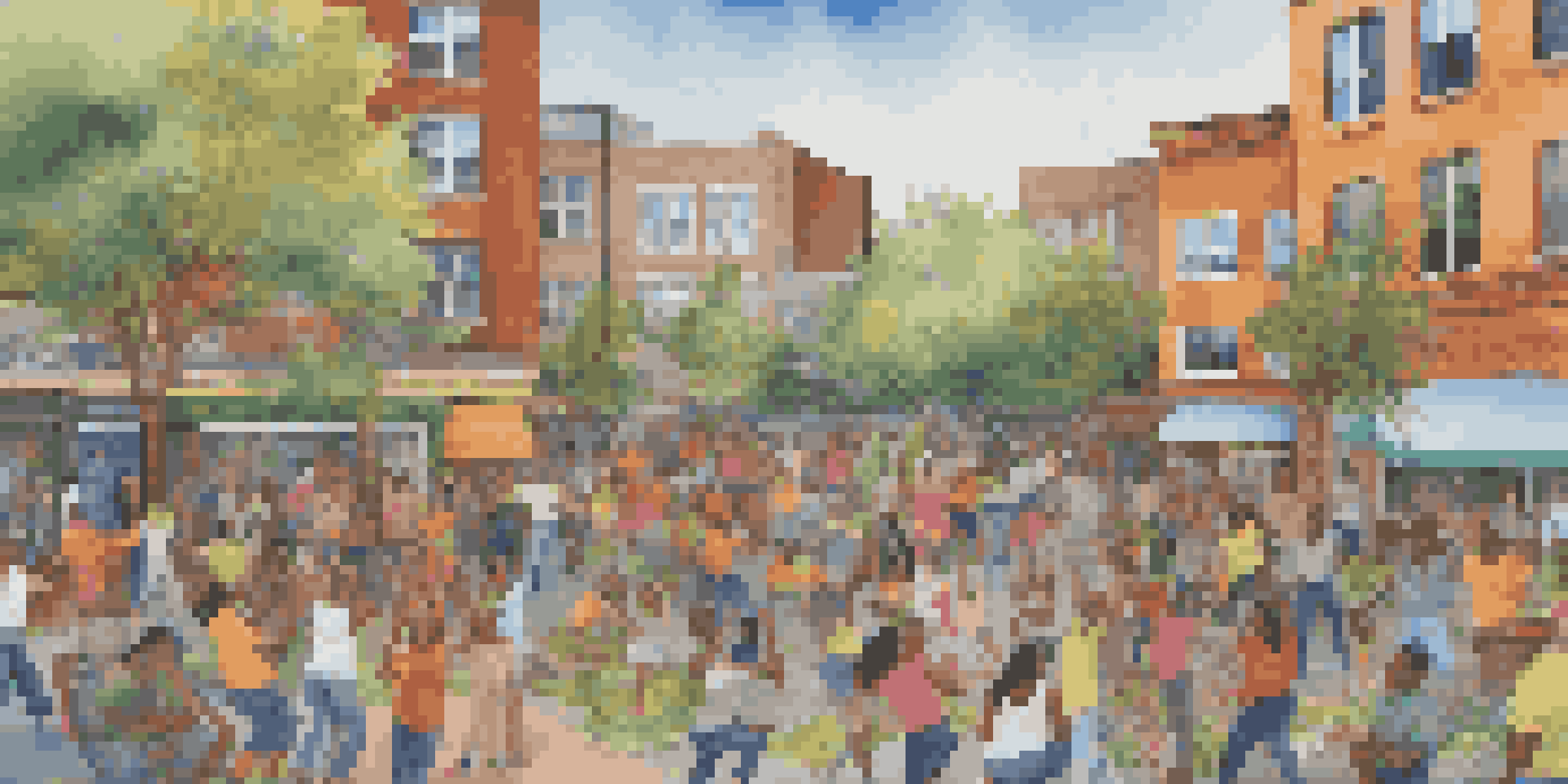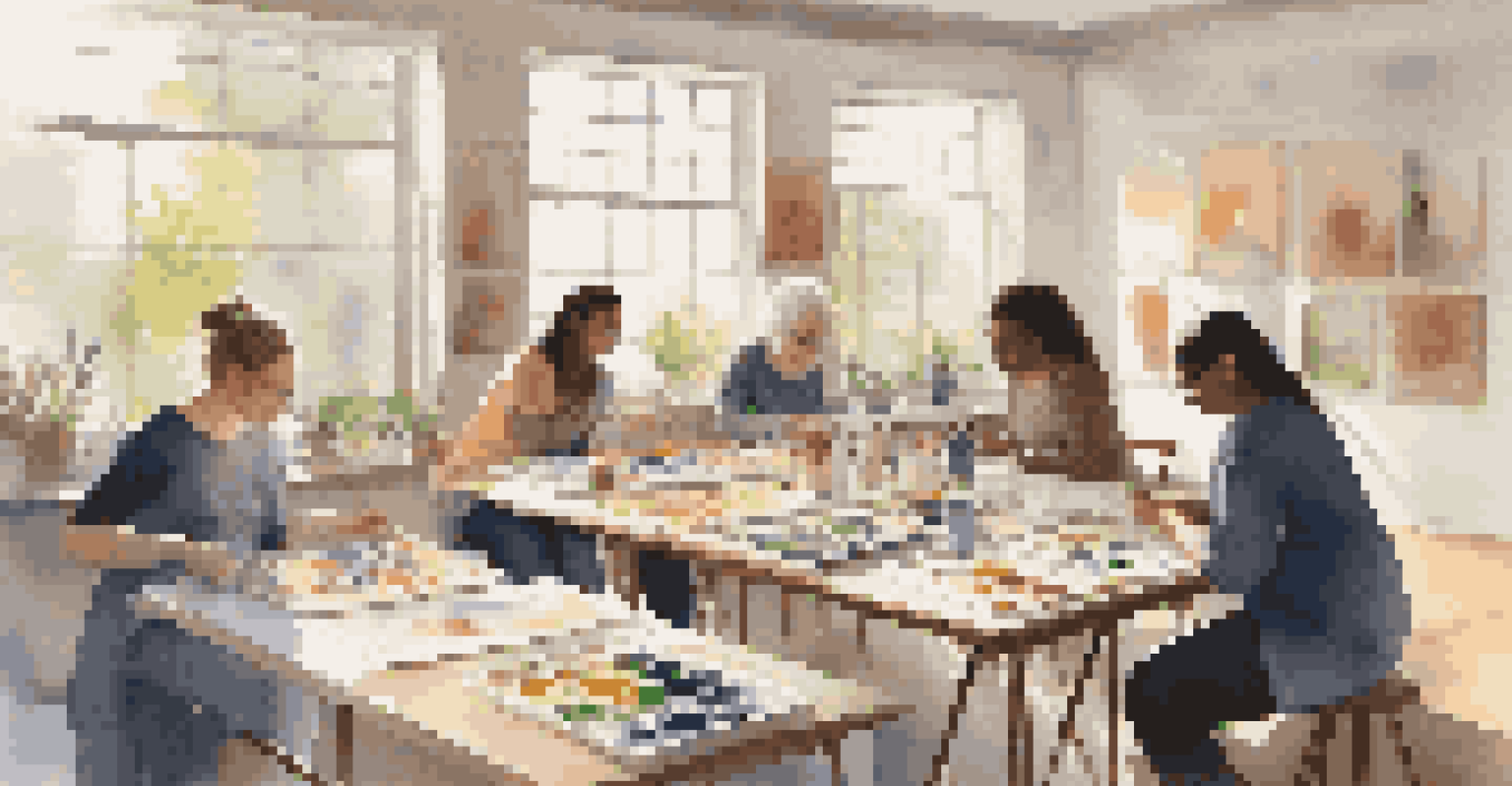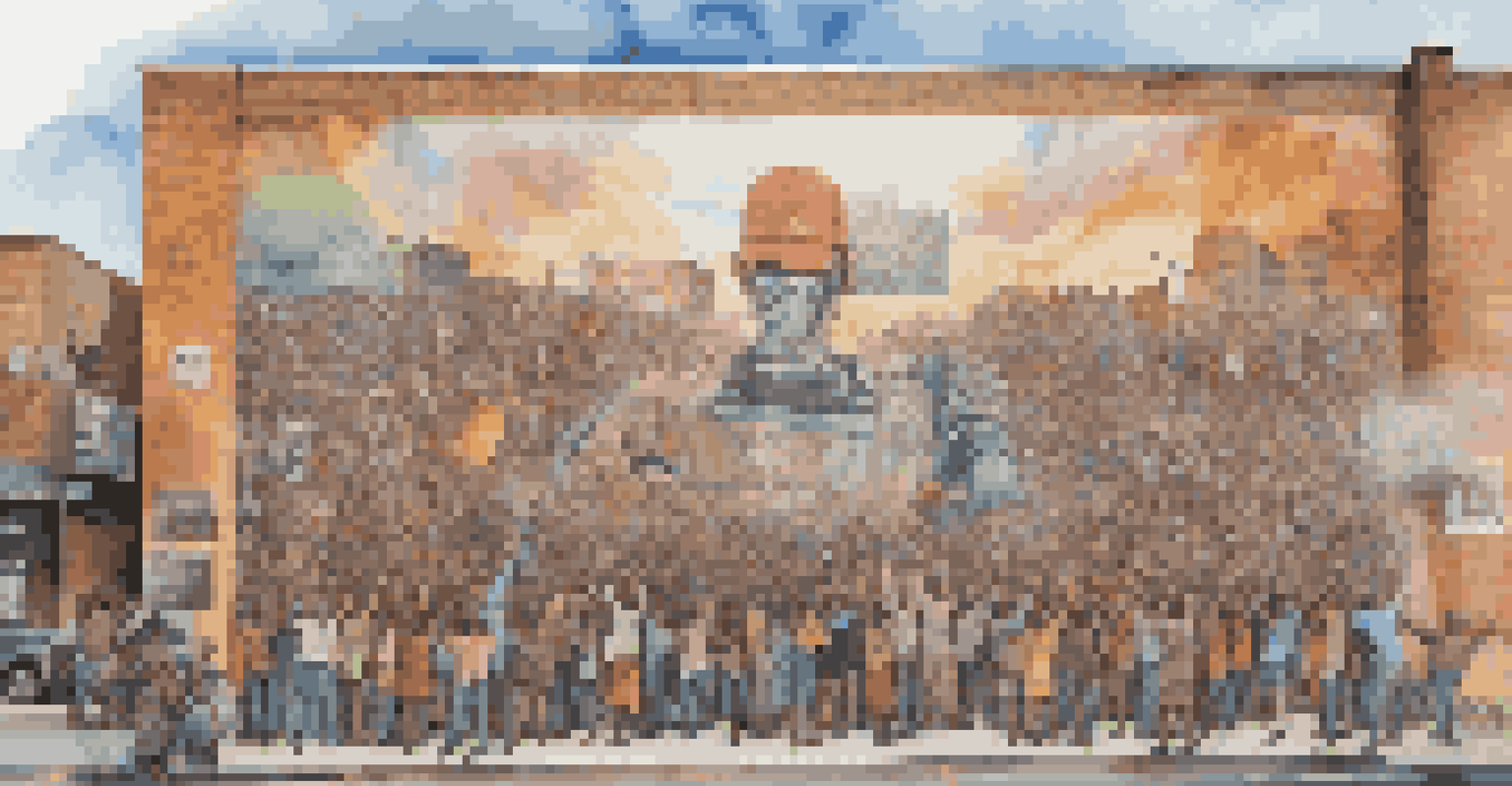Art as a Vehicle for Healing in Marginalized Communities

Understanding the Connection Between Art and Healing
Art has always been a form of expression, but it also serves as a powerful tool for healing. In marginalized communities, where individuals often face systemic challenges and trauma, creative outlets can provide a sense of relief and understanding. Engaging with art allows people to express their feelings, connect with others, and process their experiences in a safe environment.
Art is the most beautiful of all lies; it is the most truthful of all truths.
For instance, a community mural project can turn a neglected space into a source of pride and belonging. When individuals collaborate on creating something beautiful, they not only share their stories but also foster a collective identity. This shared experience can be transformative, helping to mend the emotional wounds that often linger in these communities.
Art therapy, which incorporates art-making into therapeutic practice, has shown promising results in helping people cope with mental health issues. By allowing individuals to manifest their feelings through visual mediums, music, or dance, art becomes a bridge to healing and understanding.
Case Studies: Successful Art Programs in Communities
Various organizations have harnessed the power of art to uplift marginalized populations. One notable example is the 'Healing Arts Program' in a community center that offers art classes to trauma survivors. Participants engage in painting, sculpture, and creative writing, which allows them to narrate their stories and find solace in shared experiences.

Another inspiring initiative is the 'Youth Arts Collective' that focuses on empowering young people through art. By providing mentorship and a platform to showcase their work, this program not only nurtures talent but also builds self-esteem and resilience among its members. The positive impact can be seen in the confidence of participants as they express themselves creatively.
Art as Healing in Communities
Art serves as a powerful tool for healing, allowing marginalized individuals to express their feelings and process trauma.
These case studies demonstrate that art can be a catalyst for change, helping individuals reclaim their narratives while fostering a sense of community. They show that when marginalized voices are amplified through creativity, healing becomes a collective journey.
The Role of Community Engagement in Art-Based Healing
Community engagement is crucial for the success of art programs aimed at healing. When local residents are involved in the planning and execution of art initiatives, they feel a sense of ownership and pride in the process. This participatory approach ensures that the art produced resonates with the community's specific needs and experiences.
Creativity takes courage.
For example, workshops that invite community members to contribute ideas for projects can lead to art that genuinely reflects their stories. This connection fosters deeper emotional ties and encourages participants to engage more fully in the healing process. The art becomes a mirror of their shared experiences, making it all the more powerful.
Moreover, when people come together to create art, they build social networks that can provide support and help alleviate feelings of isolation. These connections can be vital for individuals on their healing journey, reinforcing the idea that they are not alone in their struggles.
Challenges Faced by Marginalized Communities in Art Initiatives
Despite the benefits, art initiatives in marginalized communities often face significant challenges. Funding is frequently a major hurdle, as many programs rely on grants or donations to operate. Without stable financial support, these valuable programs may struggle to sustain their impact, leaving community members without essential resources.
Access to art supplies and professional guidance can also be limited in underserved areas. When resources are scarce, the quality and scope of art programs may suffer, reducing their effectiveness in promoting healing. This disparity highlights the need for more equitable distribution of resources to ensure that everyone has access to art as a healing tool.
Community Engagement Boosts Art Impact
Involving local residents in art initiatives fosters ownership and ensures that the art produced resonates with their unique experiences.
Additionally, societal stigma around mental health can prevent individuals from participating in art-based healing activities. Some may feel ashamed or reluctant to engage in programs that address emotional struggles. Overcoming this stigma requires community education and outreach to demonstrate the benefits of art in healing.
Art as a Form of Advocacy for Marginalized Voices
Art not only heals but also serves as a powerful advocacy tool for marginalized communities. Through creative expression, individuals can highlight their struggles and demands for social justice. Art can raise awareness about issues such as systemic racism, inequality, and poverty, making it a crucial element in the fight for change.
For example, street art and murals often convey messages that resonate with the community's experiences and aspirations. These visual narratives can inspire action and encourage dialogue around pressing social issues. When art reflects the lived truths of marginalized populations, it can galvanize support and mobilize efforts for change.
Moreover, art can bridge gaps between communities and policymakers. By showcasing the power of creative expression, marginalized voices can push for policy changes that address their needs. This advocacy through art emphasizes the importance of listening and valuing diverse perspectives in the quest for equity.
The Lasting Impact of Art on Community Well-being
The impact of art in marginalized communities extends far beyond individual healing. It fosters a sense of belonging, promotes cultural pride, and encourages civic engagement. When communities come together to create and celebrate art, they cultivate an environment conducive to collective well-being.
Moreover, art can inspire future generations to continue the legacy of healing and advocacy. Young people involved in art initiatives often carry forward the lessons learned, fostering resilience and creativity in their own lives. This creates a cycle of empowerment and healing that can transcend generations.
Art as Advocacy for Change
Creative expression in art highlights social issues and empowers marginalized voices, advocating for systemic change and equity.
Ultimately, the lasting impact of art on community well-being is profound. It nurtures not just the individual spirit but also the fabric of the community, weaving together diverse experiences and perspectives into a rich tapestry of resilience and hope.
Conclusion: Embracing Art for Healing and Empowerment
In conclusion, art serves as a vital vehicle for healing and empowerment in marginalized communities. By providing creative outlets for expression and fostering community engagement, art initiatives can significantly enhance well-being. This journey of healing is not just individual; it transforms communities and ignites collective resilience.
As we recognize the power of art, it's essential to support and invest in these programs. Funding, resources, and community involvement are crucial for sustaining initiatives that promote healing through creativity. Together, we can create spaces where every voice is valued and every story is heard.

Embracing art as a tool for healing and advocacy not only enriches lives but also paves the way for a more inclusive and equitable society. Let us celebrate and champion the transformative power of art in our communities.